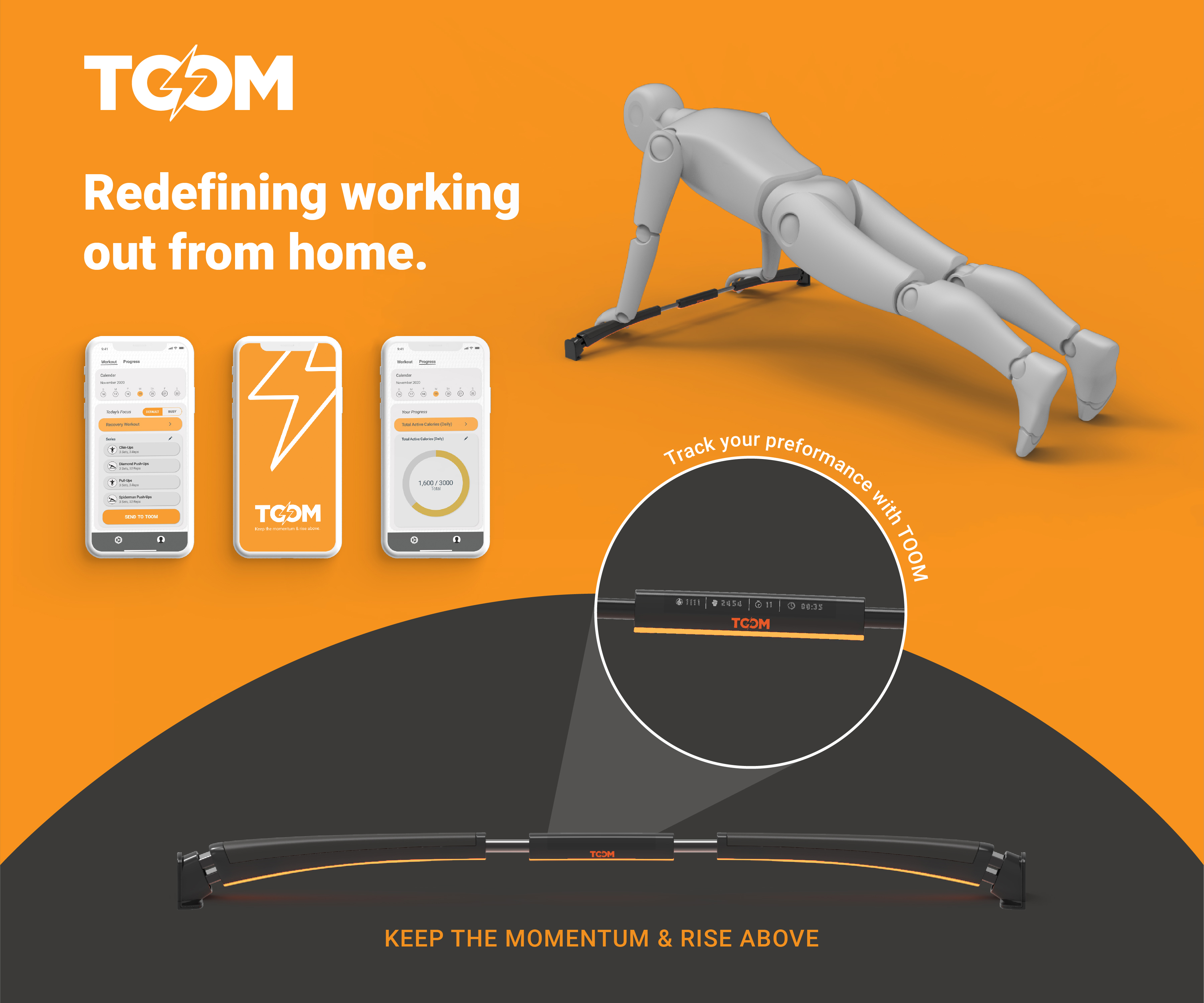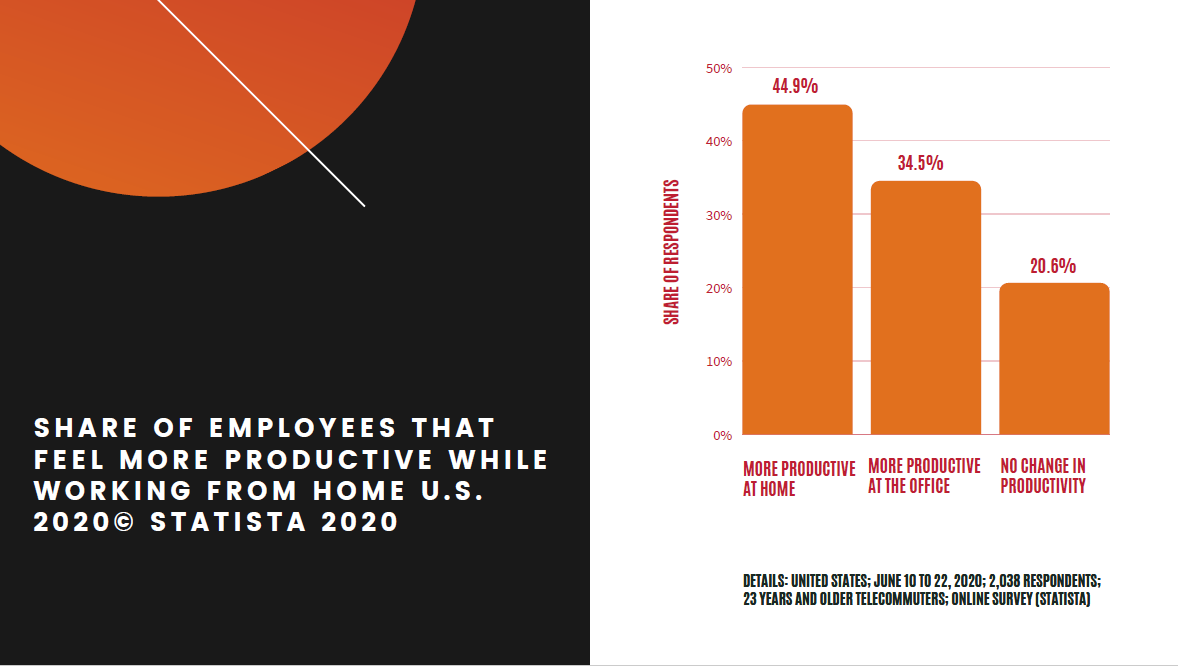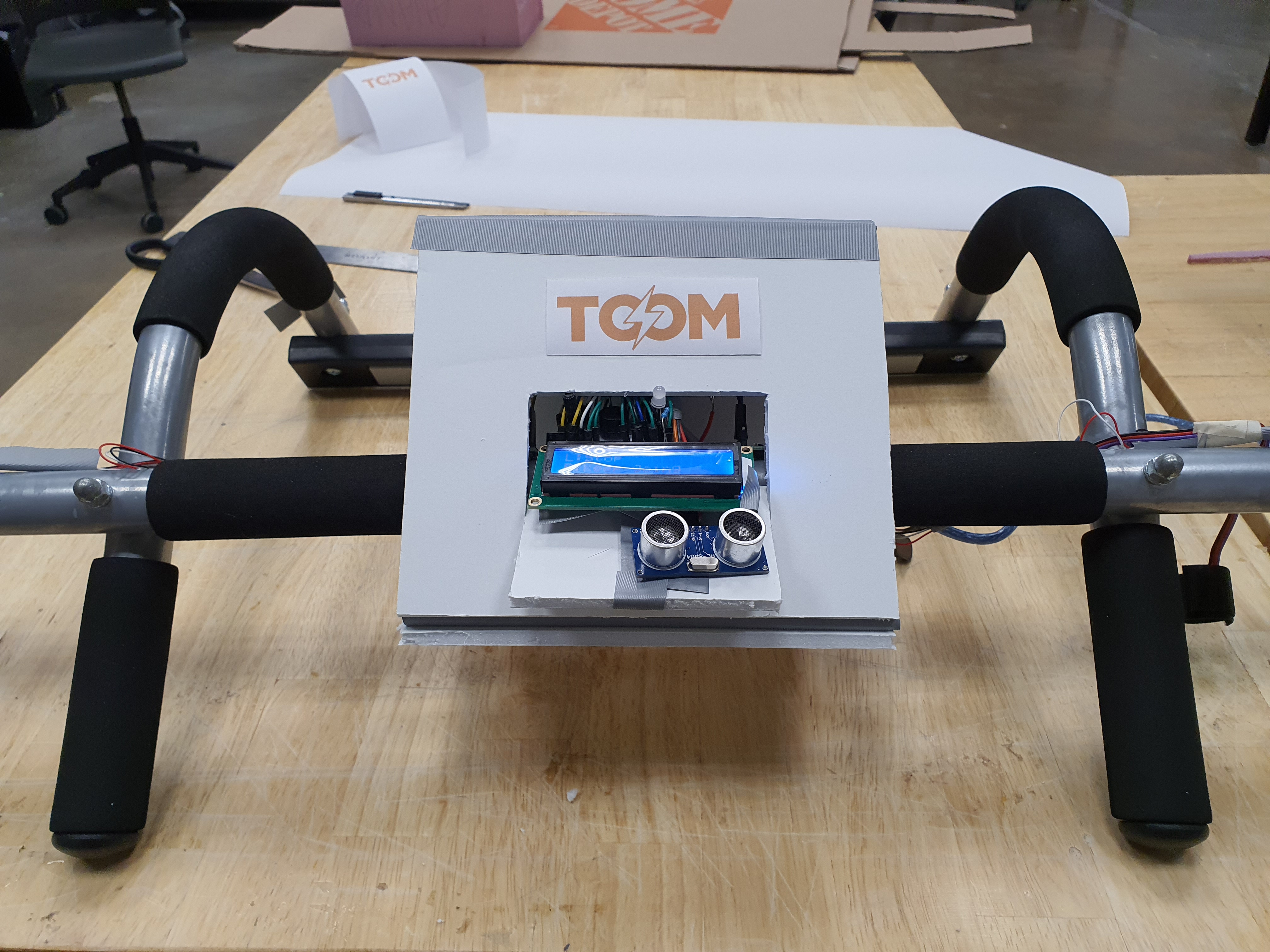TOOM
Product Design/UX Design
A collaboration with: Nitesh Kashyap, Haoran Huang, and Mokumbi Muleba. — Duration: 8 weeks.
My roles: project lead, content and research lead, product/service development, and UX/UI designer.
Refer to process book for more information on physical prototype’s components, further process, and more assets.
︎ Live Mobile Application Demo here
︎ Process Book here
A collaboration with: Nitesh Kashyap, Haoran Huang, and Mokumbi Muleba. — Duration: 8 weeks.
My roles: project lead, content and research lead, product/service development, and UX/UI designer.
About
TOOM is a workout tool that will assist users to maintain a healthy lifestyle working out from home. Once the user has set up their profile when signing up through the mobile app, it will automatically create sets of workout sets for users to enjoy whenever they are ready to pump those muscles. The bar is integrated with a set of sensors that it won’t only allow users to exercise properly but also track their progress as they continue to work out. The more exercise users do, the more tailored the next workout will be. The bar focuses on upper body workouts such as Chin-Ups, Pull-Ups, Push-Ups, and Upper-Back exercises.Refer to process book for more information on physical prototype’s components, further process, and more assets.
︎ Live Mobile Application Demo here
︎ Process Book here

Problem
The current pandemic that is hitting the world has led to many changes in the world we currently live in. From virtual meetings to not being able to see your loved ones physically, it certainly has taken a toll on everyone both mentally and physically. Although working from home has been challenging, it has brought more flexibility on tasks users do during their day; yet it has also brought some downwards such as users letting themselves go: they have decreased healthy dietary habits, their household is not as tidy/clean as before, and they do not exercise as much anymore.Opportunity
Now that people work from home instead of the office, it brought a shift of both users’ flexibility during their day and discipline when doing their tasks related to their household
— resulting in multiple pain points. This beggs the quesiton: how might we use a physical electronic object to help our users to do
their home tasks while staying productive when working from home?Final Deliverables
HardwarePush-Up/Chin-Up/Pull-Up/Upper Back Bar
Features:
- Comfortable structure to do Push-Up, Chin-Up, Pull-Up, and Upper Back exercises.
- Senses Power through pressure sensors.
- Ability to read heartbeat to calculate calories burnt while exercising.
- Evaluates performance by distance sensor
- Inbuilt display to show exercise data (amount of sets, reps, overall time, and calories)
- Sound output as indicator when exercise is done correctly or incorrectly.
- IoT to connect to the mobile app.
Data Inputs:
- Data collected by inbuilt sensors.
- Training plan downloaded from the mobile app.
Data Outputs:
- Data shown through inbuilt display
- Indicating signals shown through inbuilt buzzer and light.
- Uploading data to mobile app once workout is done.







Software
TOOM Mobile Application
Features:
- Workout of the day — The TOOM mobile app will provided tailored workouts for user (once the onboarding experience is done)
- Performance Progress — The app learnes from users’ progress, meaning the next workout will be even more tailored as the previous one.
- Busy Mode — allowing users to squeeze their workouts on a “lite” version.
- Set up desired goal — allows app to create tailored workouts.
*Onboarding experience happens once the application is downloaded: the user will provide information such as their goal, and physical information
Data Inputs:
- Data received from TOOM bar (hardware), and mobile phone (once onboarding experience is done).
Data Outputs:
- Sends Training Plan to TOOM bar (hardware).


Worth Mentioning
Since the TOOM bar only provides upper body workouts, the next step would be to create a whole line of workout tools that specialize on different areas of the body. i.e.: abs, legs, lower back, etc. Once a whole line of products is created, the mobile app will leverage for full-body workouts as each tool will be connected to the app.Disclaimer: Due to the current pandemic and the fact that the team members were located in different places accross the world (Savannah, GA/ Washington DC/ Lusaka, Zambia), the team took the decision to divide the members roles and assign each one as “lead” on their specific focus. This helped each member of the team to take accountability on their tasks as well as to serve of assistance to others when needed.
Understanding the Process
The information provided underneath will not only show the team’s research methods, but also thought process, insights, methodology, and overall elements taken into consideration for this project. Hereunder, you will find a small journey map depicting the remaining information provided of the project.
Market
Currently, the workout tools for users to workout at home present two categories they belong: either inexpensive non-smart tools or, on the other side of the spectrum, the overly expensive super smart ones. The ladder ones additionally just sit in users’ household to collect dust.The green circle portrayed in the map underneath represents the target market TOOM would be in — a space where the workout tool is smart enough to accrue data from workouts, and utilze that to give users’ more specialized workouts.

Further Research Shows
The team identified through secondary research (statista) that in 2020 almost half of surveyed users feel more productive working from home rather than their office (chart shown un table 1). Given this initial data, we conducted our own surveys and user interviews looking for opportunity spaces beyond our findings.
Figure 1
Figure 2 shows data accrued from online surveys and user interviews. Results show that altough more than 3/4 of the surveyed users said their scheduled has changed due to working from home, 80% of users changed their sleep habit, take shorter lunches, and have more time to cook.

Figure 2
Further insights gathered in the research phase shows users struggling to find balance now that their workspace and home space is the same physical space — although the flexibility allows users manage their work tasks successfully, a great imbalance is created for them when users work on their “home taks” such as cooking, cleaning, or working out.
How it works
The map underneath represents what the journey users will take to get the best value on the TOOM bar. The phones represent the steps on the journey the user will require input from the TOOM mobile app — whilethe dumbell represents the steps where users will be utilizing the bar.
As every workout ends for users, the app will be recording the data from each workout so the next one will be more tailored than the previous one. The relationship between the app and the bar rewards users to utilize the mobile application, as it progressively learns every time a workout is finished.
Who is this for
Based on accrued data and insights from our user interviews and surveys, we created one user persona that serves as a target for TOOM.
Physical Prototype
Part of the requirements on this project included to physically make a prototype of TOOM. Hereunder, are pictures and videos showing the progress of the physical prototype.The team used a pull-up bar as a base, 3D printed hangles, one arduino board, pressure sensors, a heartbeat sensor, distance sensors, an LED light, an LCD display, and a power supply (battery) to make it happen.
Please refer to the process book to look more into the physical prototype process.



